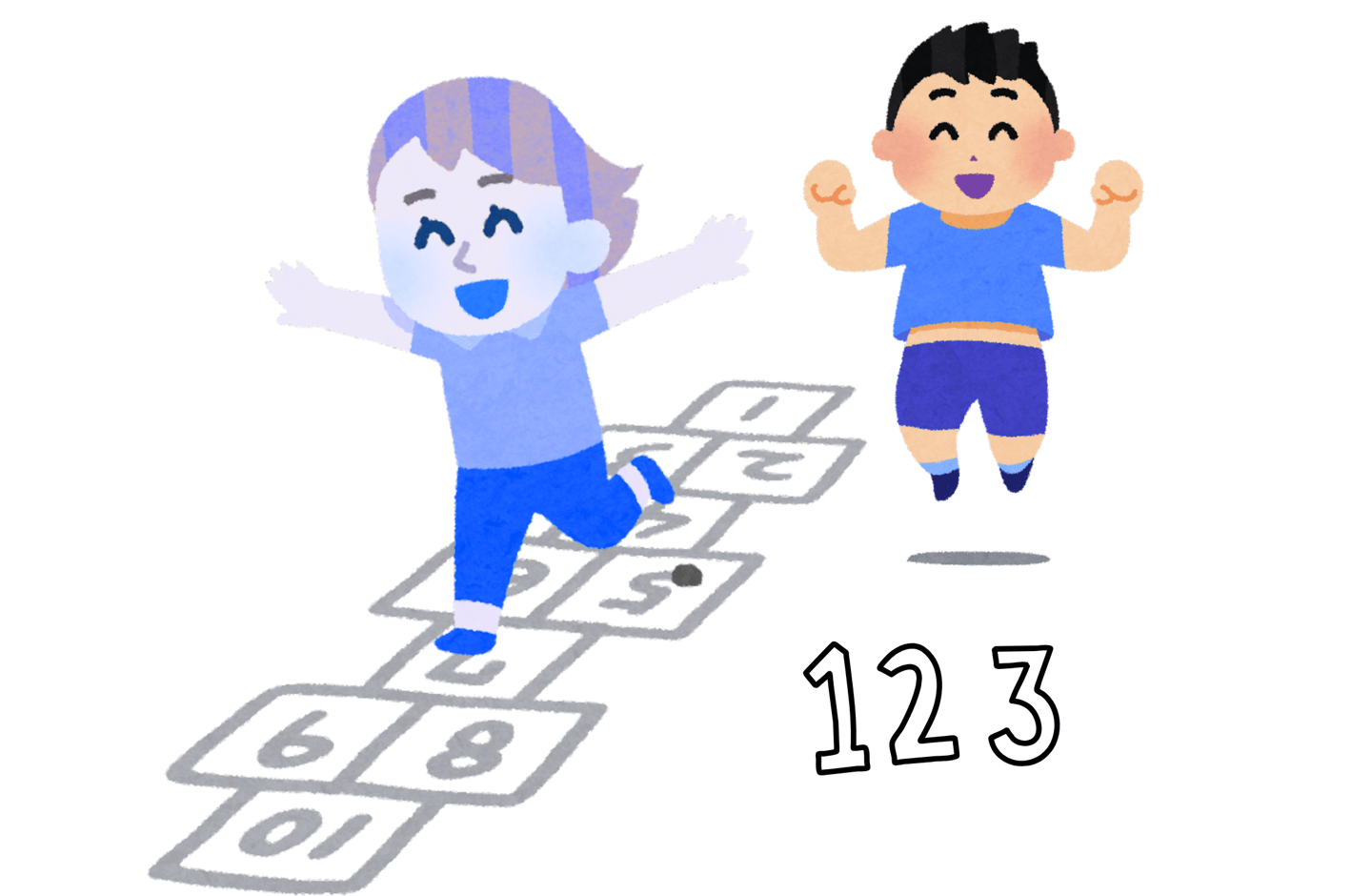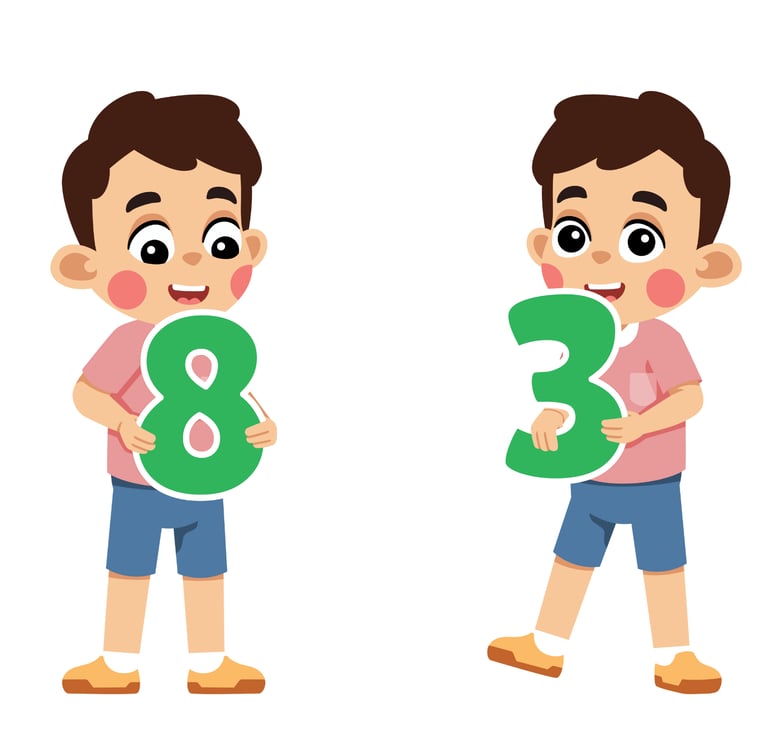How to Teach Early Math Skills with a Number Line Jumping Game


How to Teach Early Math Skills with a Number Line Jumping Game
by Dewi Griffith Ph.D
I’m Mandi, and I’m glad you’re joining us at Little Explorers Learning Hub.
I’m a big believer in hands-on activities to make early learning stick! Studies show that when kids are moving, it’s easier for them to understand math concepts.
Dr. Karen Fuson, an expert on how kids learn math, says, “Children learn best when they can connect numbers to physical actions.”
That’s why we love using a number line jumping game to practice counting and basic math skills while they’re using their whole bodies!
The topics that we cover include the following:


How to Set Up the Number Line Jumping Activity
What you’ll need:
✔️ A number line 1–20 (we made ours with chalk on the pavement, but you can use tape on the floor or print a number line mat to cut out!)
✔️ Number cards 1–10 or higher (you can print these or use whatever numbers you’re working on!)
✔️ Small toys or bean bags to place on answers (optional)
✔️ A list of counting or simple math problems/prompts
Directions:
Create the Number Line – Use a long, straight space on the ground where kids have room to jump.
Warm up with counting – Hop to each number from 1–10, saying the number as you land on it.
Move to easy math problems – Give the kids prompts such as:
“Jump to the number that comes after 5!”
“What is 3 + 2? Jump to the answer!”*
“Start at 8 and jump 2 numbers backward. Where do you land?”
Add more challenging problems as they improve – Try skip counting (jumping by 2s, 5s, etc.) or backwards counting.
Reward them! – Lots of high-fives and cheering make learning feel great!


When Little Jumpers Need Extra Help
Trouble at Hopscotch Heights!
When Emma kept on hopping on number 5 instead of 3, her teacher crouched down and grinned, “Hopscotch team players! Let’s count together! Ready? One…two…THREE!” They chanted together until Emma’s feet plopped in the correct place.
For numbers, they were extra shaky on, they also put bright green stars on them so they could “say” “Here I am!”
The Case of the Wiggly Explorer
Liam never could stay focused…until his teacher softly said, “Oh dear! Baby T-Rex has lost his egg at number 7!
Can you find it?” Suddenly, those leaps turned into a dinosaur egg rescue mission!
They also kept activities short (only until the sand timer went out) so there was always fresh anticipation.
The Mystery of the Backwards Numbers
Six and nine kept teasing Sofia. Her ingenious teacher drew a blue hat on the six (dot on top) and a red scarf on the nine (dot underneath). Before jumping, they would “write” the number in the air with magic fingers while giggling at the number appearing magically in imaginary sparkly ink.
Your Superpower for This Game
The Day the Numbers Played Hide-and-Seek
One rainy afternoon, Miss Lily’s classroom floor became a magical number river. But oh dear—her little math explorers kept stumbling!
First, there was Sam, who hopped right past number 4 every time. "Let’s be counting detectives!" Miss Lily cheered, taking his hand. Together they chanted, "1-2-3—STOP!" like a wizard’s spell until Sam’s toes landed right on target.
Then Lila started wiggling, her attention floating away like a lost balloon. Until— "CRASH!" Miss Lily gasped. "Did you hear that? The number 7 just called for help! A sleepy dinosaur left her egg there!" Suddenly, Lila’s jumps had purpose, her giggles keeping time with every rescue mission.
But poor Mateo kept mixing up 6 and 9. So Miss Lily gave them costumes—the 6 wore a tiny blue hat (a dot on top!), while 9 bundled up with a red scarf (dot below). Before jumping, they’d paint the numbers in the air with "sparkle glue," their fingers leaving shimmering trails.
As the sun peeked through the clouds, Miss Lily whispered her teacher secret: "The numbers aren’t hiding—they’re playing! And every 'oops' is just the start of a new game."
The children looked down at their number river, now sparkling with possibilities. What would the numbers invite them to play tomorrow? A pirate’s treasure count? A rocket launch blastoff? The adventure was just beginning...


References and Further Reading
References
Fuson, K. C. (2009). Math expressions: Developing student thinking and problem solving through communication.
Relevance: Dr. Karen Fuson’s work emphasizes how physical and verbal engagement helps children internalize math concepts.
Piaget, J. (1951). Play, dreams, and imitation in childhood. Norton & Company.
Relevance: Supports the idea that play-based learning is essential for cognitive development.
National Association for the Education of Young Children (NAEYC). (2022). Teaching math to young children. https://www.naeyc.org
Relevance: Provides evidence-based strategies for hands-on math activities.
Clements, D. H., & Sarama, J. (2014). Learning and teaching early math: The learning trajectories approach. Routledge.
Relevance: Explains how movement and spatial activities (like number line jumps) enhance early math skills.
Ginsburg, H. P. (2006). Mathematical play and playful mathematics: A guide for early education.
Relevance: Highlights the role of games in making math engaging for young learners.
Other articles you might like
Learning Through Play
Home Reading Tips
DIY Learning Materials
